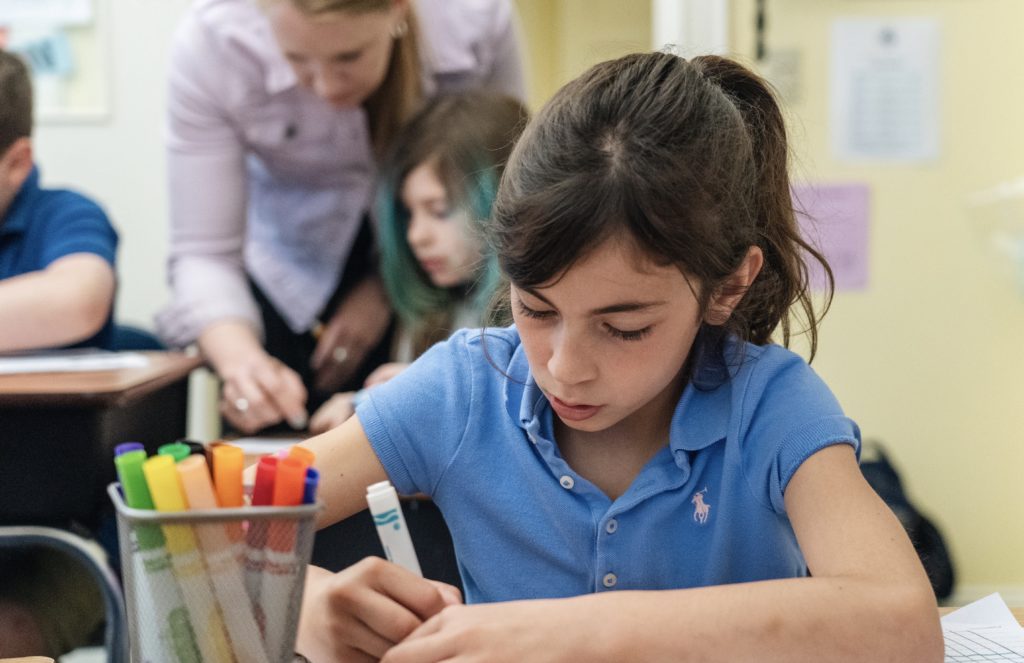Executive Function, Anxiety, and Self Regulation
Recently, these have become buzzwords in our vernacular and the topics of many conversations and articles. Neuroscientists consider how executive function impairs the brain’s ability to show its cognitive skills. Teachers and parents question, are our children really more anxious now than ever? Popular press wonders if self-regulation is a more important predictor of lifelong success than once thought. We are bombarded with information on all of these topics, and while different, they are all linked. Let’s define each one and explore their connection, and explore how executive function, anxiety and self regulation affect students.
- Executive function (EF) is the set of mental processes that enables a person to plan, focus attention, remember instructions, and follow multiple steps or tasks in order to reach a goal.1 Many think of executive functioning as the “CEO” of our brain.2 Some even use an image of a sticky note; people with strong EF skills have a “stickier” note, or a stronger ability to retain/organize/move toward their goals. EF goes hand-in-hand with the diagnosis of ADHD3, and many children with learning disabilities, like language-based learning disabilities, also have underlying issues with executive functioning.4
- Anxiety is defined by the National Institutes of Mental Health as persistent or excessive worry about everyday situations or issues.5 It is human to worry, but worrying that is so pervasive that it affects our daily lives is harmful. About 7% of children under 18 are diagnosed with anxiety. We see higher levels of anxiety in schools (maybe even 25% of students) even though these behaviors may not meet all diagnostic criteria for anxiety. Still, students’ worries affect their learning and lives.6 Schools all over the country are searching for ways to address the anxiety issue since it affects student learning and teachers’ ability to deliver instruction.
- Self-regulation refers to our ability to manage our feelings, body movements, and behavior so that we can complete the tasks required of us in our daily lives. We use self-regulation skills to keep ourselves awake during a boring meeting or to stay focused on the class we are teaching, even when stomach pains signal our hunger before lunch. It is different from self-control and is a skill we develop over the course of our lives. We do not expect three-year-olds, or even 10-year-olds, to regulate in the same way as an adolescent.
The ability to regulate ourselves is impacted by our feelings, such as anxiety, and by our executive function and vice versa. They function much like an interconnected trifecta – if we are anxious, it is going to be harder to regulate ourselves in a given situation, and our EF will likely suffer. If we cannot figure out how to take steps toward a goal, we may become less self-regulated and even anxious. In his work on EF, Thomas E. Brown discusses how we need our emotions to be in check and our self-regulation to manage our frustration or other feelings so that we can activate a plan and proceed using our EF skills.7 In this way, we can see how students with a challenge in any one of these areas (EF, anxiety, self-regulation) may demonstrate a challenge in another area. Self-regulation seems to be the connecting current, as both EF and anxiety affect our ability to self-regulate. As soon as our ability to regulate ourselves is compromised, our ability to learn and show our best work will be too. So what can teachers do to ensure students are ready and available to learn? As teachers, we want to push our students while still being sensitive to the unique challenges that EF, anxiety, and self-regulation may present for them in class. Below are some strategies and further readings that educators can use to assist students in self-regulating and managing EF needs and anxiety.
Dos (to support self-regulation):
- Be explicit about classroom expectations – when students know what is expected of them, they rise to the challenge. When expectations are unclear or shifting, students can’t foresee what they need to do, which can cause anxiety, and students will appear dysregulated.
- Post an agenda for class – this helps students understand the plan for class and what will be expected. Knowing the agenda can both calm anxiety and boost executive function because students know what’s coming and can follow along.
- Prepare students for transitions during class – give students warnings when one activity is ending and another is beginning. State your expectations for the transition clearly, and if you use time cueing (“In 5 minutes, we will put down our reading books”), make sure to cue students when half of the time is up. This curbs anxiety and supports EF so that students are more regulated.
- Provide activity starters – Students who struggle to initiate tasks are also affected by our trifecta. To help students get started on classroom tasks, provide activity starters. For example, if students are locating the main idea, help students initiate the task by cueing them to use the question to write the beginning of their answer: “The main idea of this sentence is….” You could also help them verbalize how to begin their answer by saying out loud: “My three vocabulary words are…” Providing this access point helps to decrease the mental load of figuring out where to start without giving students the answers. (EF, anxiety).
- Be creative and keep at it – students with anxiety, EF, and self-regulation issues may present with very challenging behaviors. Show empathy for their challenges and still hold them accountable. When you encounter a particularly puzzling issue, ask students or their parents/past teachers about what has worked for them. Seek the support of others so that you don’t become exhausted by their behavioral presentation.
Don’ts (that impair self-regulation):
- Don’t do tasks for students – students need to learn skills to manage the academic (and other) demands of their lives. Use strategies like microuniting to help students break down complicated tasks, but don’t do their work for them or let them get out of doing tasks.
- Don’t assume students know the steps – kids with trifecta challenges become overwhelmed by multi-step processes. If you ask them to “clean up their desk” be sure to break the task down. For example, tell them the steps to a clean desk: “First, throw your trash in the bin, put homework in your homework folder, and then put pencils in your case.” Just be sure not to give too many directions at a time.
- Don’t accommodate their anxiety – worried students will try to get out of tasks, especially those who also have EF challenges and can’t figure out how to set a goal for themselves. Be sure to hold these students to the same expectations, or the worry will get bigger and continue to take over.
- Don’t have students plan tasks/events weeks in advance – students who are under 18 do not have the neurological capability (frontal lobe development) to predict or plan more than 2-3 days ahead. This is only made worse by EF or anxiety issues. So, if you assign a longer-term project, help the student break down what needs to be done into separate tasks with corresponding deadlines. This will be excellent EF practice and will minimize unnecessary anxiety.
- Don’t assume that avoidance is laziness – students avoid it because they are anxious, they don’t know how to initiate a task, or something is too hard. Often, students with trifecta challenges are perceived as lazy and unmotivated. These students just need skills and supports to show their intelligence and abilities.
Footnotes
1 Executive Function and Self-Regulation
2 Understanding Executive Function Issues
4 Understanding Executive Function Issues
6 Trouble with Self-Regulation: What You Need to Know
7 Executive Function: Describing Six Aspects of a Complex Syndrome



